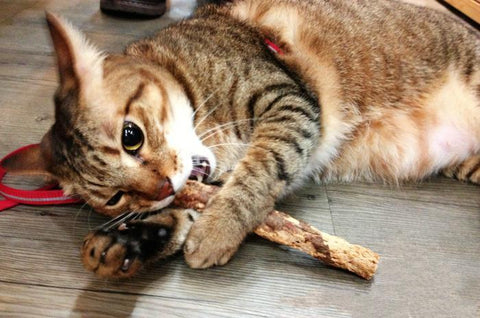Pet Dental Care: What You Need to Know
Dental problems are common in small animals like cats and dogs. If your pet have dental problems, that will be extremely painful to your beloved pet. What’s more, dental problems can lead to other serious health problems.
Dental health is a very important part of your pet’s overall health. And that’s why you should clean your pet’s teeth.
Why Does Your Pet Have Dental Problem?
There are a variety of pet dental conditions that may affect your dog or cat, some of which are very painful for them. Below are many common pet dental conditions:
- Bad breath
- Bleeding from the mouth
- Broken or loose teeth
- Extra teeth or retained baby teeth
- Pain in or around the mouth
- Reduced appetite or refusal to eat
- Swelling in the areas surrounding the mouth
- Teeth that are discolored or covered in tartar
- Abnormal chewing, drooling, or dropping food from the mouth

Have your pet's teeth checked sooner as possible if you find your pet has any of the above dental problems. If left unaddressed, your pet can develop serious health problems.
Causes of pet dental problems may be:
- Broken teeth and roots
- Broken (fractured) jaw
- Abscesses or infected teeth
- Cysts or tumors in the mouth
- Malocclusion, or misalignment of the teeth and bite
- Periodontal disease
- Palate defects (such as cleft palate)
To keep your pet’s mouth healthy, you should have your pet’s teeth checked by the vet at least once a year.

What Can You Do At Home To Keep Your Pet’s Teeth Clean?
To help ensure your pet’s teeth and gums are healthy, you can do some dental care for your pet at home as the following:
1. BRUSH THE TEETH
The most effective way to promote good dental health in both cats and dogs is to brush their teeth daily. This may seem a little daunting but most animals will get used to their teeth being brushed. And if you can’t brush their teeth everyday, every other day or three times a week is a more realistic goal.
Seek advice from your vet on when and how to start with the correct tools and technique. Besides, you can follow the below tips to make the process easier:
- Begin to brush your pet’s teeth at an early age. The younger your pet is when you start training them to have their teeth brushed, the easier your pet will get used to it.
- Give your pet time to become familiar with the process. You can start by getting your pet used to you being around their mouth. Then, use a sort cloth to clean their teeth, gently rubbing in a circular motion.
- Introduce a toothbrush and toothpaste to your pet. Once your pet becomes familiar with a toothbrush and toopaste, you can start the cleaning process. (Note: NEVER use a human toothpaste. It is poisonous to pets.)
- How to brush: Clean their teeth from front to back, in a side to side motion. Gradually build up the time spent daily until you spend 45 seconds in each half of the mouth.
- Don’t forget to praise and reward your pet throughout the process. They will gradually enjoy the experience.

2. TRY A SPECIAL DIET
There are also special diets designed for both cats and dogs. Prescription dental diets have a fiber matrix that imparts a notable firmness to the food, requiring the cat to bite through it several times before the pieces are small enough to swallow. This helps remove remove plaque on the teeth and prevent additional plaque from accumulating.
Before you decide to try a special prescription denta diets, talk to your vet to see whether this is a good choice for your pet.
3. TRY DENTAL CHEWS AND TOYS
Dental chews and toys are also available for both cats and dogs. They can help to reduce the formation of plaque and tartar. You can get advice on the most effective products from your vet.
What Else Should You Do Besides Home Dental Care?
Besides, it is important to make sure your pet gets a vet check up every year, which includes a dental check-up. At this visit, your vet will be able to assess your pet’s teeth and gum health, and provide advice on anything you need to manage at home.
Your vet may recommend that your pet has a general anaesthesia to allow a full dental examination, cleaning of your pet’s teeth, dental x-rays if indicated, and the treatment of any specific problems (such as damaged teeth), if required.
